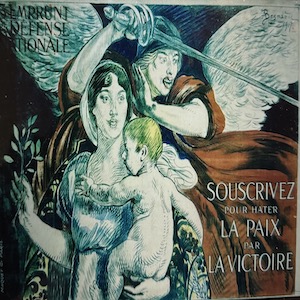The First World War
The First World War is a wonderful collection of primary source documents drawn from 24 archives across the globe (such as The British Library, Hoover Institution Library and Archives, and Imperial War Museums, etc.). This digital project offers a remarkable window on the lives and experiences of people during the First World War. It divides the sources into four thematic modules: Personal Experiences, which allows users a close-up view of WWI history from the bottom to up by focusing on the perspectives of the soldiers; Propaganda and Recruitment, which provides essential insights into propaganda and recruitment throughout the Great War; Global Conflict, which documents events and battles that occurred in and beyond the European theatres. It also offers an insight into the peace negotiations, post-war relief work and regeneration in Europe; Visual Perspectives and Narratives, which provides various visual and documentary resources, and presents international perspectives on the conflict, the Home Front, the role of women during the war, and much more. The resource is designed for both teaching and study, from undergraduate to research students.
The home page lists seven tabs at the top of the screen: "Introduction," "Documents," "Audio-Visual Sources," "Maps," "Galleries," "Explore," and "Help." The Collection offers a rich and well-organized archive of historical texts and images of the topic. The section "Documents" allows users search the documents through the theatre of War, document type, document language, library /archive, date, and modules. It also allows for precise searching by searching keywords, countries, places, and names in the tab "advanced search." The document types including from diaries, trench literature and soldiers’ journals, letters, minute books, extracts from local newspapers, military instructions, printed reports, telegrams, American and British Red Cross papers, government documents, etc.
The "Map" and "Galleries" sections provide vast and varied range of visual materials, including postcards, scrapbooks and albums, aerial leaflets, war art (oil paintings and pencil sketches), photographs, cartoons and comics, propaganda, recruiting posters, military maps, and more. All of the materials are organized by document type for ease of navigation. Users can find what they're looking for by clicking different galleries or using the filter options. Each image can be exported as PDF file, or teachers can display any image using Lightbox, a feature that is convenient for lectures and creating presentations. The tab "Interactive Maps" shows fourteen key fronts, battles and campaigns of the First World War as well as showing global warfare's effects on nation states and their boundaries and displays the course and movement of the conflict over time. The most interesting tab is the "360 Object Galleries," which provides a significant collection of digitally captured objects used during the war period which have been sourced from museums, such as weapons and ammunition, equipment, souvenirs, uniforms and medals. All objects are presented in 360° with a series of metadata.
The section "Audio-Visual Materials" is divided in two tabs: “Film” and “Oral Histories.” "Film" features film footage of the First World War and its impact on society, including the fighting front and the civilian life, and events such as those surrounding the assassination of Franz Ferdinand, Chinese and South African labor contingents, recruitment and training, Lawrence of Arabia meeting with King Faisal, women at war, and more. "Oral Histories" features 50 oral history recordings of veterans and others who lived through the First World War. Recording dates range from 1972 to 2002 and include transcriptions.
Finally, the section "Explore" provides users with a series of valuable secondary sources to supply the rich primary sources. Under the tab "Essays" and "Case Studies," users can find contextual information on First World War themes, including links to primary source documents. The "Great War Glossary" contains a list of explanations for contemporary terms and soldiers’ slang used during the First World War which may now be less familiar. The site also offers a range of bibliographic information including external links to libraries and outside websites, and indexes of further reading.
The website is well framed with a flexible search engine. Those written and visual source materials presented on this site can be used creatively in the classroom, for example, students will better understand why recruitment propaganda, appealing to patriotism was crucial at the very outbreak of war, and why governments exerted control over mass media and get insights into the entire propaganda machine during the war. They can also learn about how the United States and other countries helped repatriate citizens in the war years and afterwards. Most importantly, this well-designed collection resources that deal with the mental conditions and economic bases of ordinary people to describe their reactions, struggles, and thoughts of the Great War This offers students a chance to engage with social and cultural history. The wide array of document types and topics covered provides a firm foundation for study and research, offering students and scholars an unsurpassed resource on multiple aspects of the Great War.
